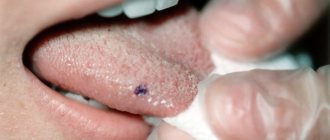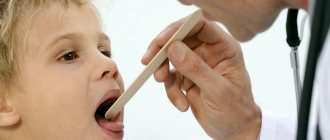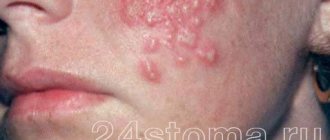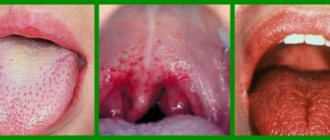“Three-day fever”, “summer flu”, “Boston fever”, “Turkish chickenpox” are just a few names for the Coxsackie virus. This heat-loving infection, contrary to popular belief, can ruin summer holidays not only on the Turkish coast. Infection with this disease is recorded annually, in addition to Turkey, in Greece, Spain, Bulgaria and even on the Black Sea coast of Russia. Is there any way to protect yourself from this infection? Who is at risk, who does the virus “choose” first? And how to treat if you are already infected?
- Symptoms of the coxsackie virus in children
- What products are recommended for patients?
- Is it possible to use Viferon for coxsackie?
- What antiviral drugs can be taken for prevention?
Every year, starting from 2022, Rospotrebnadzor issues leaflets for tourists planning to spend a summer holiday at sea in warm countries, which talk about the dangers of the virus, as well as some resort places where the likelihood of infection is especially high.
People traditionally go to the sea with whole families with small children to relax and improve their health, and instead of the gentle sea and beach they risk spending time isolated in a hospital bed. So what do you need to know about the virus to avoid getting sick, and if you do get sick, how to treat it to avoid dangerous complications?
Symptoms of the coxsackie virus in children
What is usually called the Coxsackie virus is actually a group of enteroviruses (29 strains) that enter the human body through the oral mucosa and then, reaching the intestines, begin to actively multiply there. The symptoms of the disease are very similar to chickenpox, which is why it is often called “Turkish chickenpox.” But there are also differences: in adults the disease is less severe than in children. Children, due to their underdeveloped immune system, are the easiest prey for the virus. In severe form, the disease can affect the nervous system, including the brain, as well as disrupt the functioning of the heart and affect changes in the muscle tissue of this organ, and negatively affect the liver.
The virus is extremely stable in the external environment and is perfectly preserved in the aquatic environment (drinking water from fountains, ice from raw water, swimming pools). You can also become infected with the virus through airborne droplets (from one person to another), contact (toys in the children's room, swimming in the pool) and food (through dirty dishes, unwashed vegetables and fruits, water). The contagiousness (infectiousness) of the virus is almost 100%. That is, if one child in the playroom gets sick, after a couple of days everyone who came into contact with him will feel unwell, including adults. Only in adults the disease can pass almost unnoticed; many tourists do not even realize that they are sick, attributing the malaise to fatigue or overheating on the beach, since they already have an established immune system. But if a person has reduced body resistance, then you cannot do without a doctor. So what symptoms indicate this enterovirus infection?
Symptoms in the initial stage of the disease:
- Intoxication, which is often indicated by a brown or yellowish coating on the tongue;
- High temperature up to 39-40ºС, against this background convulsions are possible;
- Headache, weakness and drowsiness, aches throughout the body;
- Loss of appetite, nausea, vomiting;
- Redness in the throat, enlarged submandibular lymph nodes.
Rash period: mouth-hand-foot syndrome
- After 1-2 days, watery blisters with a diameter of about 2 mm form on the inner surface of the cheeks and lips, and around the outside of the mouth. They open themselves, which leads to the formation of ulcers.
- Simultaneously with the rashes in the mouth, the same blisters appear on the skin of the palms and soles. The rash may also appear on other parts of the body.
Recovery period
After 5 days, the immune system begins to produce antibodies. The temperature drops, the general condition of the child gradually improves. The recovery period lasts 5-7 days: ulcers on the mucous membrane heal, appetite returns. On average, the disease lasts 10 days. However, if the child’s immunity is weakened, the virus remains in the nervous tissue and periodically causes relapses of diseases: for example, serous meningitis, herpetic sore throat, conjunctivitis, viral heart disease, and so on.
Routes of transmission of the virus
Virus transmission occurs:
- respiratory route,
- fecal-oral route,
- through contact and everyday life,
- vertically (from mother to child during pregnancy and childbirth).
Viral particles are released into the environment through breathing, saliva, and defecation in feces.
If the rules of personal hygiene are not observed sufficiently, infection can occur very easily. This explains the widespread spread of infection in crowded groups - kindergartens, summer camps, on hotel grounds (especially in swimming pools). Playing with shared toys, licking them, or putting unwashed hands in their mouths is common among young children. And few preschoolers know how to wash their hands correctly: long enough and washing out all the creases between the fingers and under the nails.
The virus is highly contagious, meaning that a small amount of viral particles enters the body for the disease to develop.
What antiviral agents for Coxsackie virus are recommended for patients (at the INN level)
For any disease, comprehensive treatment under the supervision of a doctor is necessary. And enterovirus infection is no exception. As a rule, when characteristic signs of the disease are detected in a small patient, both antiviral antiviral and symptomatic treatment is prescribed. Among antiviral drugs, drugs containing interferon are used. Such drugs include Viferon Suppositories.
Suppositories containing human interferon do not give the virus a head start of several days until the body itself begins to fight the infection, but begins to act immediately, thereby reducing the recovery time. For symptomatic treatment, the following is used:
- Antipyretic syrups or suppositories containing paracetamol or ibuprofen.
- To avoid dehydration and alleviate the symptoms of intoxication, you should drink plenty of water (boiled or bottled), water with lemon;
- For diarrhea, it is advisable to take absorbent agents, such as activated carbon;
- To relieve pain in the mouth, you can use gels used for teething in babies.
- To speed up healing and prevent infection of mouth ulcers, antibacterial sprays are used;
- Although the rash usually does not cause itching in children (unlike chickenpox), if it bothers the baby, antihistamines can be used.
What treatment is there?
To date, there is no specific therapy for each enterovirus in the world. General antiviral treatment includes interferon-type drugs. These drugs do not stimulate one’s own immunity, but introduce ready-made interferon into the body, in particular interferon Alpha 2B, which has moderate antiviral activity not only against enteroviruses, but also against many other infections.
Interferon inducers that stimulate the immune system should be used strictly under the supervision of a physician, since their effect on the body is quite complex, and the doctor must take into account various factors before prescribing them.
Treatment for manifestations of enterovirus infection will vary depending on the symptoms. If the patient has a high fever and muscle pain, then non-steroidal anti-inflammatory drugs are prescribed. For fever, this is paracetamol, anti-inflammatory - ibuprofen, for sore throat and herpangina - local antiseptic solutions.
Enteroviruses infect the small intestine, as their name suggests, because “entero” is translated from Latin as “small intestine.” If abdominal pain and stool disorders appear, sorbents and probiotics are used, sometimes enzymes, depending on the nature of the digestive disorders.
Is it possible to use Viferon for coxsackie?
According to the instructions, the drug is recommended for the treatment of enteroviral infections in complex therapy, including as an antiviral agent against the Coxsackie virus.
The recommended dose for newborns, including premature babies with a gestational age of more than 34 weeks, is VIFERON 150,000 IU daily, 1 suppository 2 times a day after 12 hours. The course of treatment is 5 days.
Premature newborns with a gestational age of less than 34 weeks are recommended to use the drug VIFERON 150,000 IU daily, 1 suppository 3 times a day after 8 hours. The course of treatment is 5 days. The recommended number of courses is from one to two with a break of 5 days.
Children under 7 years of age, daily 1 suppository of 150,000 IU 2 times a day with an interval of 12 hours for 5 days (if indicated, treatment can be continued with a break of 5 days).i
Tests and diagnostics
The diagnosis of a specific nosological form of EVI is made on the basis of complaints, clinical manifestations, data from laboratory and instrumental examinations.
Laboratory tests include: CBC, OAM, analysis for Coxsackie virus (nasopharyngeal swab, vesicle contents, cerebrospinal fluid for enteroviruses using PCR), blood for CSC/PHA.
Additional diagnostic examinations: ECG, biochemical blood test (bilirubin, creatinine, AlAt, AsAt, urea), blood coagulogram, comprehensive ultrasound, MRI.
What antiviral drugs can children take to prevent coxsackie?
Usually, before traveling to resorts, questions arise about the prevention of a particular disease that is present in a hot climate, and against which people from other regions have no immunity. Of course, it would be great to give some antiviral drugs for children against Coxsackie to your child and then go on vacation in peace. But, unfortunately, as in the situation with the flu, there are no such drugs that 100 percent protect against infection. And there are two ways: either not to visit places with small children that are potentially dangerous for them in terms of infection, or to observe all possible precautions, first of all, personal hygiene and the hygiene of the child. Make sure that he does not touch his face and mouth with dirty hands, does not use other people’s things, including toys, and eats only clean, heat-treated water and only well-washed fruits. It is clear that in resort conditions, it is not always possible to wash your hands with soap, so it is worth stocking up on disinfectant gels that you can use to treat your hands. Also, as a preventive measure, antiviral drugs for Coxsackie can be used, which in the form of sprays, gels or ointments are applied to the nasal mucosa to avoid infection by airborne droplets.
Create a short algorithm for the treatment of enteroviruses
If we describe the treatment tactics briefly, then:
- First, we determine that it is a viral infection and not a bacterial one - this is the key to successful treatment. At the slightest doubt, consult a doctor.
- We focus on the manifestations of the disease and determine the clinical form.
- We treat with interferon drugs and symptomatic medications.
We must not forget that the disease progresses differently in different people, and sometimes even a doctor finds it difficult to determine one or another clinical form. Therefore, it is important not to trust self-medication, but to contact a specialist in time, who can carry out the necessary tests and procedures, and get the patient back on his feet.
conclusions
The lack of specific immunity makes almost every person vulnerable to diseases caused by pathogens of the enterovirus group. You should not treat “resort infections” irresponsibly; they often lead to serious complications. Most patients infected with the Coxsackie virus do not require hospitalization, have no negative consequences, and recover within 10-14 days. But children under 3 years of age are at high risk of developing dehydration, especially with vomiting and diarrhea. And if, nevertheless, a trip with a small child to the resort must take place, then the mother needs to take care of both additional hygiene products and the presence of a first aid kit with essential drugs in her luggage, so as not to run around local pharmacies in search of “antiviral drugs for coxsackie”. And, of course, when applying for insurance, you need to make sure that with this infection you can count on the help of a doctor, which is especially important if the disease suddenly causes complications.
Author of the article
Belyaev Dmitry Alexandrovich
General doctor
iExperience of using Viferon in complex therapy of serous meningitis of enteroviral etiology” / S. P. Kokoreva, A. M. Zemskov, N. P. Kuprina // Pediatrics. – 2002. – N 5. – P. 68-71. – ISSN 0031-403X
Loading...
Take other surveys
Hand-foot-mouth syndrome
In English, the name is presented as an abbreviation HFMD, which stands for hand, foot and mouth disease (hand-foot-mouth disease). This type of virus is also known as pemphigus of the mouth and extremities.
Stages of the disease
- The disease begins with general signs of malaise - lethargy, fatigue, emotional instability, mood swings (children become moody), increased body temperature.
- Then painful aphthae (rash elements) appear in the oral cavity; they can be on the mucous membrane of the lips and cheeks, gums, palate, back wall of the pharynx, and on the tongue. Vesicles (bubbles) are small in size, but very quickly enlarge and burst, forming ulcers surrounded by a zone of hyperemia (redness). As a rule, stomatitis causes significant discomfort and makes it difficult to eat and drink.
- In addition to stomatitis, a rash may appear on the hands and feet, and in young children, also around the mouth, in the buttock folds and perineum. Elements of the rash may resemble chickenpox blisters, for which the disease was called a synonym for “Turkish chickenpox.” Most often, the rash is not extensive, but it can also spread quite severely.
- The temperature returns to normal within 1-3 days, recovery occurs by the end of the first week. It is believed that a sick person is most contagious during the period of rash, although in some cases the virus is shed in saliva for up to 3 weeks, and in feces for up to 8 weeks after illness.
When should you see a doctor if a rash occurs?
Often the rash does not require treatment and goes away on its own; in other cases, treatment consists of taking antihistamines and using topical medications that reduce itching and swelling, topical corticosteroids.
The rash may be a symptom of an underlying disease or indicate the development of an allergic reaction.
You should not engage in self-diagnosis or self-medication; to find out the cause of the rash, diagnosis and proper treatment, you must consult a doctor.
Rashes in infants are often not truly allergic. Read more about tactics for prickly heat, newborn acne, diaper dermatitis and other types of rashes in the material “Rashes in Babies.”
You should contact a pediatrician if air baths, prevention of overheating, frequent diaper changes, and the use of local remedies do not give a positive result, the rash does not go away within a few days; you notice signs of infection - increasing pain, swelling, redness of the skin, rashes accompanied by the release of pus, the formation of crusts, enlarged lymph nodes in the armpits, neck or groin; the child is lethargic, refuses to eat, and has a fever.
Get emergency medical help if the rash appears suddenly, spreads quickly throughout the body, is accompanied by severe itching, blistering, fever, swelling of the lips, eyelids, cheeks, hands, neck, vomiting, difficulty breathing, difficulty swallowing, or changes in skin color .
Consequences and complications
EVI, which occurs in mild forms, ends in the vast majority of cases with complete recovery. However, with meningitis , encephalomyocarditis and meningoencephalitis in newborns, complications such as cerebral edema, hemi/monoparesis, epileptoid seizures, and decreased muscle tone are common. Severe EVI can contribute to acute respiratory failure and the development of pneumonia, and in case of eye damage - cataracts .






